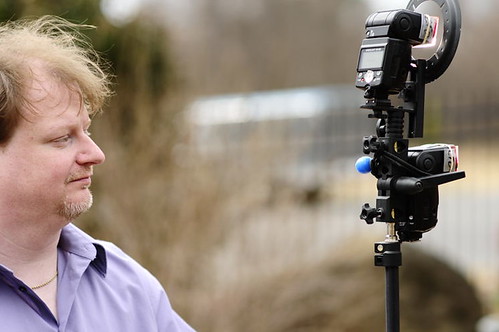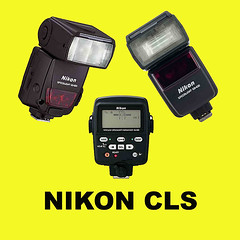Have you ever actually used Auto FP with your CLS system? No, I mean really used it because there was a need for it? I would imagine most of you have not, and you're probably wondering when and why you would actually need it other than in a desert with Joe McNally and David Hobby. I mean if you really needed 1/8000s why not just crank the aperture down to like f/32 and use a stronger light like a Profoto or Elinchrome? Simple, the client doesn't want f/32 they want f/1.4.
Case in point. I had to shoot an annual report this past week which is really not my normal segment of business, but being the photographer who can't say no to getting paid I took the job. So the concept was easy 4 outdoor portraits in a decorated garden pond area of a local nursery. Easy enough, speedlights are perfect here. Environmental run and gun portrait work. We shoot, we move, we shoot, we move. About 30-45 minutes per person is all the time we had once the stylist was finished. Not that big of an issue. A little TTL some FV Comp and we are off running quick. Here is the wrinkle. The AD wants a very out of focus background, and space limitations mean that the subject is anywhere from 5 to 15 feet in front of the background. Truth be told the subject was as important as the tonality and texture of the background it was not something which could be changed. So how do you get a nice out of focus background? You open up the aperture, move the subject away from the background, and use long glass to compress the image. Problem is again due to space constraints (both distance subject could move, and due to stray objects in the frame) long glass was not an option, and the subject moving towards the camera was not an option. The only thing I had left was f/1.4. Which works great, until the sun comes out and your subject is in the shade while the background is lit with that direct sunlight.

The savior! No not Kevin, but the two SB800 units. You have to remember that while using two flashes may seem like a lot it only gives you one more stop of. So what image did I get thanks to this setup?

I don't want to hear any complaining about image quality here. This photo has zero post processing done on it. It needs a little cleaning up. But none the less it was shot at ISO Lo 1, 1/4000s, f/1.4 with the trusty Nikon 50mm. You can just see the corner of the gazebo we were all standing under in the top right of the frame (To be cropped off). Kevin was camera left with the previously pictured dual SB800 setup. You can see there are 1/4 CTO gels on each speedlight. I had to dial in a +2.0 into the SU800 that was firing off both SB800 units on group A. Why? This is where you have to try and think like your camera. The meter was reading bright light, no need for flash or at least not a lot. It was thinking subtle fill flash pop. But we need to light a darker skin toned African American. The meter has no idea what we are doing. It just makes a middle of the road guess and plays it safe. So I dial in the correct compensation for the correct exposure on the subject. The whole thing was fired through a Lastolite TriGrip using just the diffusion fabric. I had to shoot at 1/4000s in order to get the ambient exposure on the background down. Yes, I could have used a 3 stop + a 1 stop ND filter and then thrown the juice and used a pack and head system, but heck why when you have a simple tool that will do the job?
The important thing here is the background. It is soft, out of focus, and just what the AD wanted. Which results in happy clients. Which leads to more business in the future. So yes, Auto FP






1 comment:
Auto FP is sometimes create problem. Manual shooting is the best to capture any moment.
Post a Comment